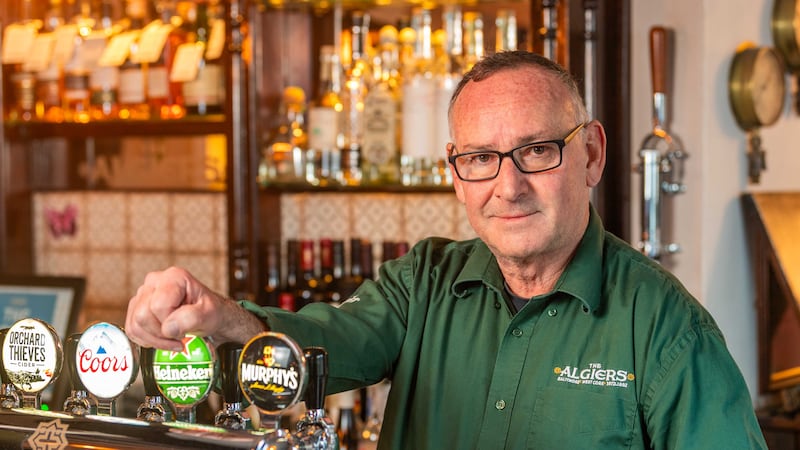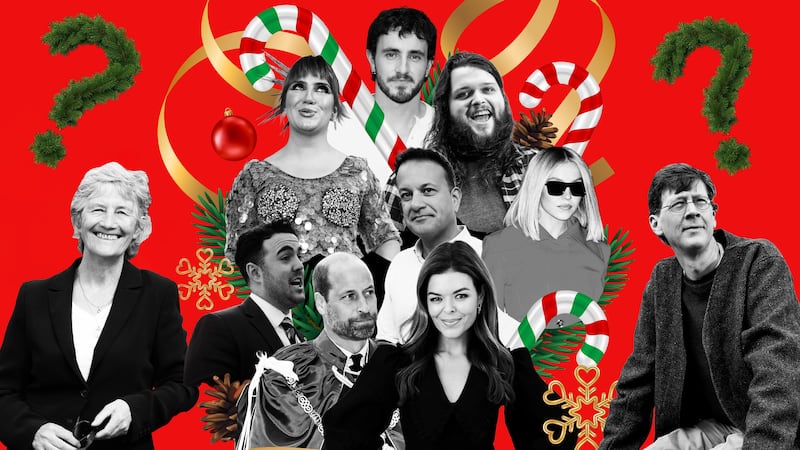When Amulya Lal first arrived in Ireland, 16 years ago, finding a job was not a problem. The architect secured a professional role within four days of landing in a country she’d never visited before and quickly settled into her new morning routine of walking from Dublin’s North Circular Road into the city centre and along the banks of the River Liffey.
“I walked a lot back then. I’d walk in the winter mornings when it felt so dark but you could smell the baguettes and fresh coffee. That smell of coffee would linger in the air. And I was so cold: I’d wear thermals and a woollen scarf.”
Being an Indian in Dublin in 2006 felt very different from what it must be like for those who arrive into what has now become a “multicultural cosmopolitan community”, says Lal. “Now there’s so many Indian shops with such a variety of vegetables, but when I arrived I was, like, ‘Where are all the Indian vegetables here?’ It’s good I’m a meat eater, that’s half the battle won. I also remember the tap water tasted so sweet — and the same with the potatoes: they were really tasty.
“Back then when you saw another Indian you’d recognise each other and smile. At the end of the day our country always binds us together.”
Born and brought up in the city of Hyderabad, in the southern Indian state of Telangana, Lal spent her childhood in a bustling household led by her paternal grandfather, who was fascinated with foreign cultures and languages.
“He was an educationalist,” Lal says with a smile. “He was multilinguistic and loved the French language. He’d take us to the Alliance Française and used to voluntarily teach people French, he just loved it so much. Years later, when I went to France myself, I thought about him through all the trip, wishing he was there. He never went to France himself.”
Lal’s father was also a keen learner and studied for postgraduate qualifications in law at night school while working full time at the local bus department. “He also loves teaching; he does it as a hobby now. I’m proud of my dad, because, working part-time, he’s gained so many qualifications in law.”
While Lal also loved languages, and speaks the regional language of Telugu along with Hindi and English fluently, she had a real passion for drawing and design. She went on to study architecture for five years in Hyderabad and then worked with a couple of Indian architecture firms in the early 2000s, until she decided to get married.
The son of family friends was already working for a technology company in Ireland when Lal’s parents suggested she consider him as a partner for their arranged marriage.
“We very distantly knew each other, and they felt this boy lives in Ireland and is settled with a good job. We were from the same family background, so we could relate with each other and the struggles we’d gone through.”
“This may sound strange or new to someone hearing it for the first time, but in India it’s not a man getting married to a woman: the families get married to each other; that’s the concept over there. My parents didn’t put any pressure on me; they said I should speak to him and see what he’s like. So we had some chats and we thought, This is right. That’s 17 years ago now.”
Lal and her husband, Praveen, got married in India in November 2005, and eight months later she arrived in Dublin. They started married life in an apartment in the city centre and the following year bought a house in Clonee, in northwest Dublin. In March 2008 Lal gave birth to their son, Piyush, and went on maternity leave. But when she returned to work, six months later, she discovered her job was no longer available.
“Everyone was being laid off at that time. When people talk about the crash it’s one thing, but when you personally face the crash that’s totally different. I never thought I’d be away from the architecture field; I thought I’d just get a new job. But the crash lasted a long time, and whatever job I applied for I was either overqualified or underqualified. I applied to hundreds and hundreds of jobs. It was a very difficult time.”
As Lal’s husband’s job remained secure, she decided to step back from work and focus on home life. In 2011 the couple’s daughter, Saanvi, was born; in the years that followed, Lal focused on caring for her children while also taking on some freelance architecture projects from contacts in India.
“I’m a very positive person, and if things didn’t always work out, that’s okay. I just needed to look at the other opportunities that were ahead of me, and in the meantime I could enjoy motherhood. I really thoroughly enjoyed spending that time with my children.”
In 2015 she secured a job with SEE Airtricity; two years later she moved to eBay. She quickly worked her way up the ranks of the organisation and is now a marketplace adviser, helping small businesses to grow and succeed. She also coleads a diversity and inclusion team, which works to promote acceptance of different nationalities, cultures and sexualities within the company, and is studying for a professional diploma in ecommerce at University College Dublin.
Lal has been an Irish citizen for more than a decade; although she found it hard to give up her Indian passport in order to naturalise, as required by the Indian government, she feels “happy being part of Irish society”. She speaks Hindi to her children, and is heartened by her son’s recent interest in learning more about India, but accepts they are “very much Irish”.
Although the family visit India for holidays most years, Lal hopes to return and spend more time with her parents in the future. “At every point in time we ask ourselves, When do we go back to India? Should we have gone when the kids were small? But then you reach a stage where your kids are part of this life here. We don’t really have the answer of what will happen in the next 20 years.
“When we come back from India I feel homesick for a few days, but life is so busy here: the 9am-5.30pm just goes by in a wink. Time flies so fast you just get used to it. I think that’s how the human mind adjusts.
“I feel very connected to this place now. I’ve never felt rejected here or looked upon differently. I’m one of you now — maybe not in looks but in thinking, This is my home.”
We would like to hear from people who have moved to Ireland in the past 10 years. To get involved, email newtotheparish@irishtimes.com or tweet @newtotheparish














